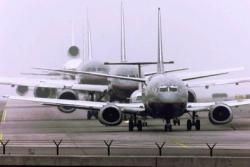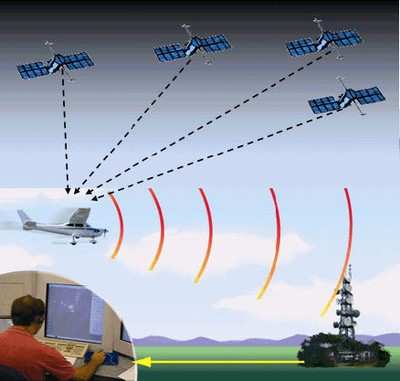Fri, Mar 13, 2009
System Will Address Capacity At Nation's Busiest Airports
 Raytheon was recently awarded a
contract to develop the NextGen Terminal Data Distribution System,
which will make more efficient use of the crowded airspace in the
US. The contract was awarded by the US Department of
Transportation's Volpe National Transportation Systems Center, part
of the Research and Innovative Technology Administration. The Volpe
Center provides key support to the Federal Aviation Administration
on NextGen.
Raytheon was recently awarded a
contract to develop the NextGen Terminal Data Distribution System,
which will make more efficient use of the crowded airspace in the
US. The contract was awarded by the US Department of
Transportation's Volpe National Transportation Systems Center, part
of the Research and Innovative Technology Administration. The Volpe
Center provides key support to the Federal Aviation Administration
on NextGen.
The TDDS will automate flight information, resulting in improved
capacity in the nation's airspace. It will facilitate the exchange
of net-enabled data between disparate systems and integrate
multiple data sources to better manage the airspace. It will be the
first-of-its-kind terminal system applied in the FAA's System Wide
Information Management program.
The SWIM program will enable increased common situational
awareness and improve the National Airspace Systems' ability to
deliver the right information to the right place at the right
time.
"Raytheon is continuing to lead and support NextGen with
innovative solutions," said Andy Zogg, Raytheon Network Centric
Systems vice president of Airspace Management and Homeland
Security. "We see TDDS as an important first step in helping
address the capacity issues in our nation's airspace."
TDDS will facilitate the exchange of NAS flight data with
multiple existing systems, allowing them to better manage in-flight
and airport traffic flow.
As aircraft fly through airspace, they pass through different
tracking systems. The tracking systems transmit data and
communicate with each other using point-to-point interfaces, each
with a unique communication link and special purpose protocol. This
makes adding new interfaces and capabilities costly and
time-consuming.
The SWIM program requires cost-effective deployment of new
capabilities to manage airspace more effectively and efficiently.
TDDS will replace the point-to-point interfaces with
SWIM-compliant, service-oriented architecture.

The team, led by Raytheon's Network Centric Systems, includes
Lockheed Martin's Transportation and Security Solutions Division,
Intelligent Automation and Dnutch Associates.
More News
He Attempted To Restart The Engine Three Times. On The Third Restart Attempt, He Noticed That Flames Were Coming Out From The Right Wing Near The Fuel Cap Analysis: The pilot repor>[...]
Make Sure You NEVER Miss A New Story From Aero-News Network Do you ever feel like you never see posts from a certain person or page on Facebook or Instagram? Here’s how you c>[...]
From 2009 (YouTube Edition): Leading Air Show Performers Give Their Best Advice for Newcomers On December 6th through December 9th, the Paris Las Vegas Hotel hosted over 1,500 air >[...]
Aero Linx: NASA ASRS ASRS captures confidential reports, analyzes the resulting aviation safety data, and disseminates vital information to the aviation community. The ASRS is an i>[...]
“For our inaugural Pylon Racing Seminar in Roswell, we were thrilled to certify 60 pilots across our six closed-course pylon race classes. Not only did this year’s PRS >[...]
 NTSB Final Report: Rutan Long-EZ
NTSB Final Report: Rutan Long-EZ ANN FAQ: Turn On Post Notifications
ANN FAQ: Turn On Post Notifications Classic Aero-TV: ICAS Perspectives - Advice for New Air Show Performers
Classic Aero-TV: ICAS Perspectives - Advice for New Air Show Performers ANN's Daily Aero-Linx (06.28.25)
ANN's Daily Aero-Linx (06.28.25) Aero-News: Quote of the Day (06.28.25)
Aero-News: Quote of the Day (06.28.25)




